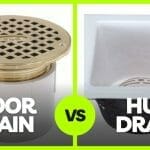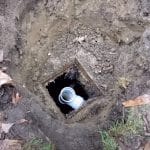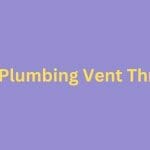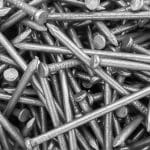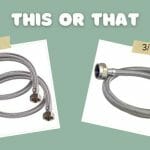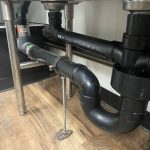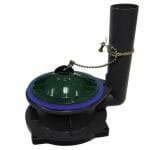When it comes to choosing the right type of PVC pipe for your project, the two most common options are SDR 35 and Schedule 40 PVC pipes. Both pipes are used extensively in plumbing, irrigation, and drainage applications, but they have different characteristics that make them more suitable for certain projects than others. In this blog post, we’ll explore the pros and cons of each type of pipe, and help you make an informed decision about which one to use for your next project.
SDR 35 PVC Pipes
SDR 35 PVC pipes are a type of pipe that are designed for use in low-pressure sewer applications. They are typically made from polyvinyl chloride (PVC) resin, and are known for their smooth inner walls, which reduce the amount of friction and resistance within the pipe. This can help to increase the flow rate of liquids and solids through the pipe, making them ideal for drainage applications.
Pros
- Smooth inner walls allow for high flow rates
- Flexible and easy to install
- Resistant to corrosion and chemicals
Cons
- Lower pressure rating than Schedule 40 pipes
- More prone to damage from roots and other underground obstructions
Schedule 40 PVC Pipes
Schedule 40 PVC pipes, on the other hand, are designed for use in high-pressure applications. They are thicker and stronger than SDR 35 pipes, which allow them to handle higher pressure and flow rates without bursting or leaking. They are commonly used in plumbing, irrigation, and other applications where high-pressure water or air flow is required.
Pros
- High pressure and flow capacity
- Durable and resistant to damage from impact and pressure
- Widely available and easy to find
Cons
- Not as flexible as SDR 35 pipes, which can make installation more difficult
- Higher cost than SDR 35 pipes
Differences between SDR 35 and Schedule 40 PVC Pipes

Size and Thickness Differences
One of the main differences between SDR 35 and Schedule 40 PVC pipes is their size and thickness. SDR 35 pipes are typically available in smaller diameters than Schedule 40 pipes, and are also thinner and more flexible. Schedule 40 pipes are larger and thicker, which allows them to handle higher pressure and flow rates without bursting.
Pressure Rating Differences
Another key difference between the two pipes is their pressure rating. SDR 35 pipes are designed for low-pressure applications, and typically have a pressure rating of 35 psi. Schedule 40 pipes, on the other hand, are designed for high-pressure applications and have a pressure rating of 140 psi or higher.
Cost Differences
There is also a significant cost difference between SDR 35 and Schedule 40 PVC pipes. SDR 35 pipes are generally less expensive than Schedule 40 pipes, which makes them a popular choice for budget-conscious projects. However, the higher cost of Schedule 40 pipes is often justified by their greater strength and durability.
Environmental Considerations
Both SDR 35 and Schedule 40 PVC pipes are environmentally friendly and can be recycled after use. However, SDR 35 pipes are often preferred for their lower environmental impact, as they require less energy and resources to produce and transport.
Comparison Table: SDR 35 vs Schedule 40 PVC Pipes
| Factor | SDR 35 PVC Pipes | Schedule 40 PVC Pipes |
| Pressure Rating | 35 psi | 140 psi or higher |
| Diameter | Smaller | Larger |
| Thickness | Thinner | Thicker |
| Flow Capacity | Lower | Higher |
| Flexibility | Higher | Lower |
| Cost | Less expensive | More expensive |
| Environmental Impact | Lower | Higher |
Summary
In summary, SDR 35 and Schedule 40 PVC pipes are two commonly used types of pipes that have distinct differences. SDR 35 pipes are typically used in low-pressure applications and are known for their smooth inner walls, flexibility, and resistance to corrosion and chemicals. On the other hand, Schedule 40 pipes are designed for high-pressure applications and are thicker, stronger, and more durable than SDR 35 pipes.
When deciding between the two types of pipes, it is important to consider factors such as pressure rating, diameter, thickness, flow capacity, flexibility, cost, and environmental impact. Ultimately, the right choice will depend on the specific needs of your project, including the type of application, the amount of pressure and flow required, and the budget available. By understanding the pros and cons of each type of pipe, you can make an informed decision and ensure that your project is successful.
- Hub Drain vs Floor Drain: What You Need to Know

- 20 Types of Plumbing Systems: Everything You Need to Know

- SUNGATOR Vs SharkBite: What’s the Difference?

- 10 DIY Plumbing Repairs That You Can Fix Yourself

- Accidentally drilled hole in PVC drain pipe – [Step By Step Repairing]

- What Is Septic Tank Baffle? How It Works – A Complete Guide

- Plumbing Vent Through Exterior Wall

- Water Heater Expansion Tank Leaking: Tips to Fix

- Can I Use 3 Inch Nails for Framing? Essential Tips and Guidelines

- 1/2 Or 3/4 Water Supply Line: Choosing the Perfect Fit for Your Plumbing Needs

- 3 Compartment Sink Air Gap Drain

- Water Right Water Softener Reviews: The Ultimate Guide
- American Standard Champion 4 Flush Valve Problems – [Fixed]

- Shower Drain Slow But Not Clogged: Easy Fixes for Speed Up Flow

- aquapiston vs class five flush [Full Comparison]



